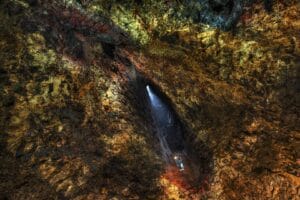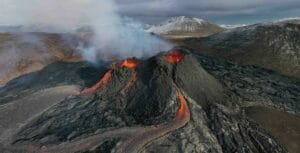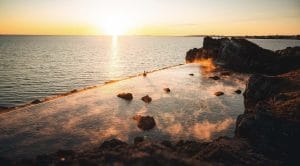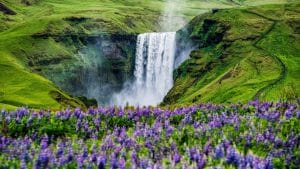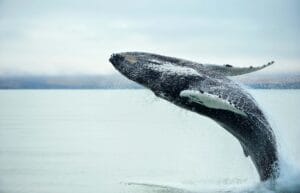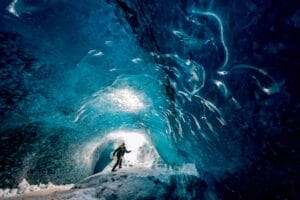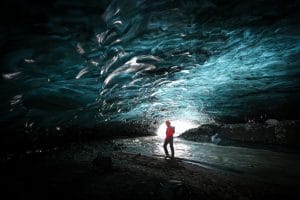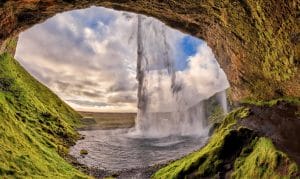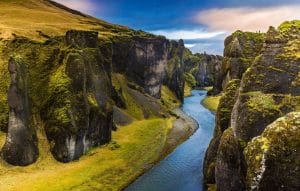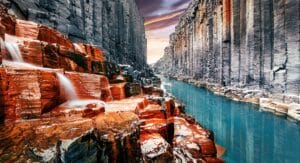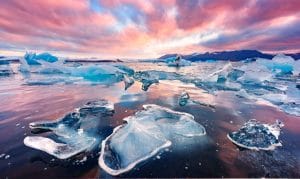A visit to Iceland is incomplete without visiting one or more of the splendid waterfalls of this country. Iceland is a land of waterfalls that hosts some of the most bizarre and gorgeous waterfalls that exist. Each waterfall has a distinct character that will have you in awe. Their height, shape, size, the growing landscape, and also the folklore about each waterfall on this land of fire and ice will leave you in wonder. The best part about most waterfalls here is the combination of basalt columns and cleanest glacier waters that cut through rocks decorating the many waterfalls.
We have curated a list of the must-see Icelandic waterfalls from most popular to the off-beat-path destinations. Check out our list to know about the amazing waterfalls Iceland has to offer.
Kirkjufellsfoss
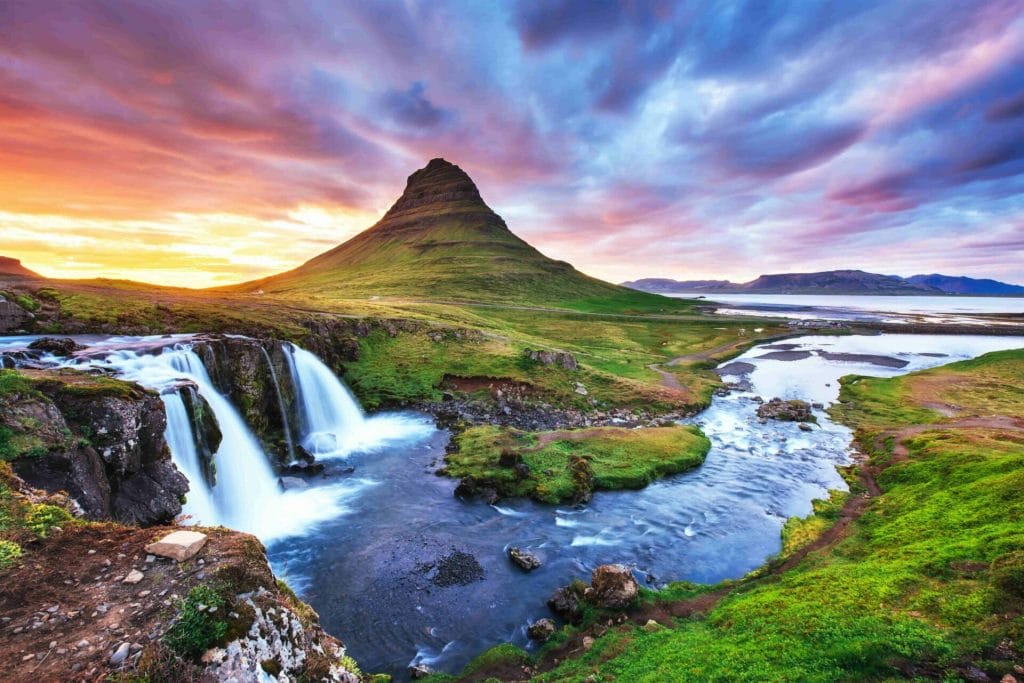
The Kirkjufellsfoss is a short delightful waterfall located on the north side of the Snæfellsnes peninsula near the striking Mount Kirkjufell at Grundarfjörður. Kirkjufell is a 463 meter (1519ft) high mountain that has become one of the most iconic sites in Iceland because of its shape and stand-alone location by the sea with a vicinity of waterfalls. Kirkjufell name means “Church Mountain” as Kirkja is the Icelandic name for the church and its shape resembles that of a church.
What so special about Kirkjufell is the colorful scenic mountains which look just magical. The mountains emit a striking view of green in the summers and orange in the winters, vanilla white under the snow, and different strokes at the sunrise and the sunset. The snow blanketed mountains at Kirkjufell are best experienced in the light of the midnight sun in midsummer and under the glorious Northern lights during winter. The magnificent Kirkjufellsfoss with the serenity of its waterfalls and dramatic background attracts nature lovers and photographers. Already photogenic Kirkjufell Iceland is just perfect for aurora borealis as it faces the north, and it is fed by copious glacial rivers with rain and snow in the mix.
How to get to Kirkjufellsfoss Waterfall?
Kirkujufell is located along the circular road 54 around the Snaefellsnes Peninsula. It is a 2-hour 15-minute drive from Reykjavik. Alternatively, there are many tours available like All Day Tour from Reykjavik to the Snaefellsnes National Park, Photography Tour, and 2-Day Snaefellsnes tour with Northern light hunt.
Hengifoss

Hengifoss waterfall is the third highest waterfall in the country. It is amongst the popular attractions of East Iceland. It has a whopping height of 128 meters and showcases a stunning backdrop of the ribbon-like cascading waterfall. Made with outstanding red clay and black basalt rock, the alternating colored rock patterns form a gorgeous contrast for crystal-clear falling water. The breath-taking fiery red and black patterned rocks will soothe your eyes. The path that leads to the waterfall is covered with stunning summer colors which brings serenity to the place. With a geographical history of about 5-6 million years, Hengifoss waterfall is every bit beautiful; it not only treats you with extremely beautiful landscapes but also many mythological facts that will have you awe-inspired. The spectacular Hengifoss waterfall falls into the gorge Hengifossárgljúfur located in Fljótsdalur valley. Hengifoss waterfall is about 145 meters above sea level and it takes a hike of 2 km approx. from the parking spot to reach the waterfall.
How to reach Hengifoss?
The trailhead to the Hengifoss waterfall is almost 700 km away from Reykjavik, so it will take you about 8 hours to get there by car. There’s parking at Eiðar, after which you would need to take a 2.5 km long hike up the hill to the waterfall. This will take you to the Litlanesfoss waterfall, a smaller but equally beautiful waterfall with basalt columns on the way to your destination. After another 40 mins into the hike, you will reach the Hengifoss waterfall.
Read more in these detailed articles about Hengifoss waterfall or the Hike up to Hengifoss & Litlanesfoss waterfalls.
Dettifoss
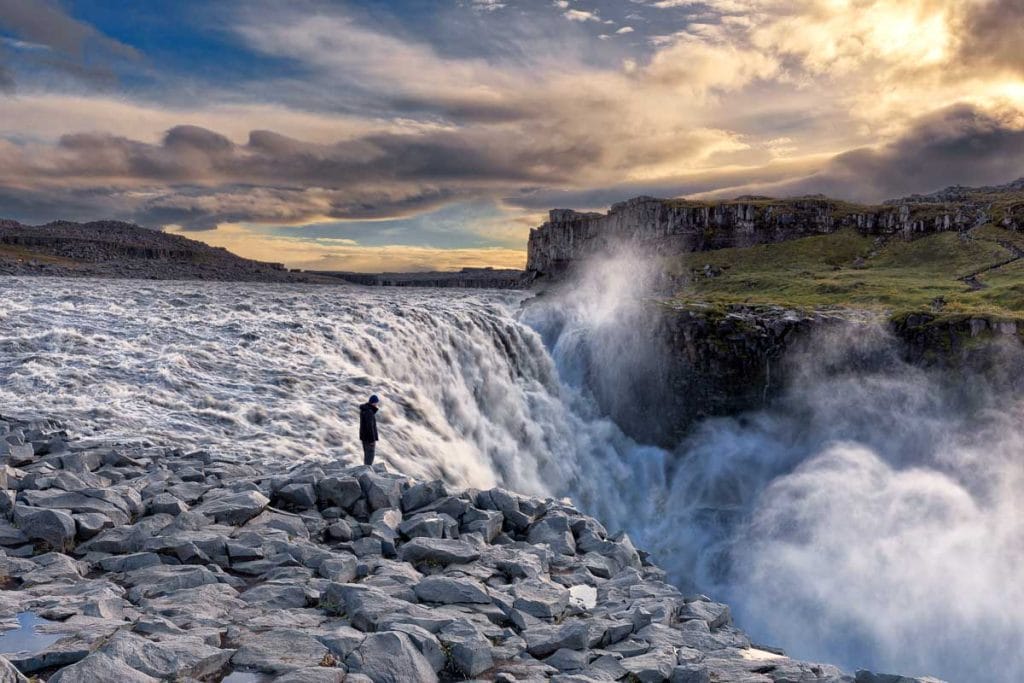
Known as the most powerful waterfall in Europe, Dettifoss is found in North Iceland. Measuring 45 meters high and 100 meters wide, Dettifoss is a part of the Diamond Circle tours. Named as ´The Beast’ in comparison to Goðafoss as ‘The Beauty’, Dettifoss is known for its large appearance. The mist is visible from numerous miles away and the rainbows. Dettifoss is fed from Jökulsá á Fjöllum, a massive glacier river which comes from Vatnajökull glacier which is known as the biggest ice cap in Europe.
How to Get to Dettifoss?
Dettifoss is 7 hours away from Reykjavik and 2 hours away from Akureyri. After passing the sign for Mývatn, turn on road 862 and then you will come across a path that will take you to the West bank of the waterfall. The East side of the waterfall can be reached via road 864, but the road is less safe and closes due to snow from November.
Háifoss
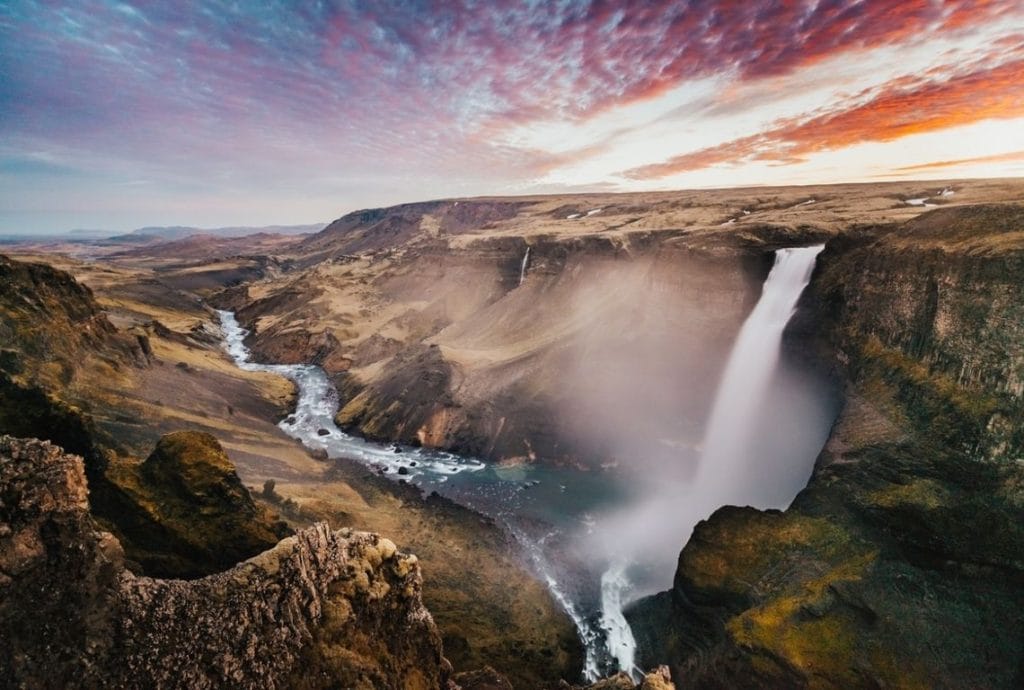
The scenic beauty on the edge of the southern highlands of Iceland, Háifoss waterfall is one of the tallest waterfalls in the country. With a height of 122 meters, Háifoss is the fifth tallest waterfall in Iceland. It is indeed one of the most beautiful sites to discover Iceland’s beauty. Háifoss waterfall is located in Fossá river which is a tributary of Þjórsá river, a glacial river which is also Iceland’s longest glacial river. Fossá forms Háifoss and a neighboring waterfall named Granni (which means neighbor in Icelandic) when it flows into the Þjórsárdalur valley and cascades into two runlets of vivid icy blue water. It truly makes for a captivating scene and an ideal photographic location.
How to get to Háifoss?
Háifoss waterfall is about 140 km away from Reykjavík so it will take you about 2 hours to get to your destination. Most of the journey is on Route 32, take a left turn on 332 where you will come across a sign ‘Laxargljúfur’. It is a small 7.2-kilometer-long ride after you take an immediate right turn at the very next T-point turn that to the parking lot for the waterfall.
Svartifoss
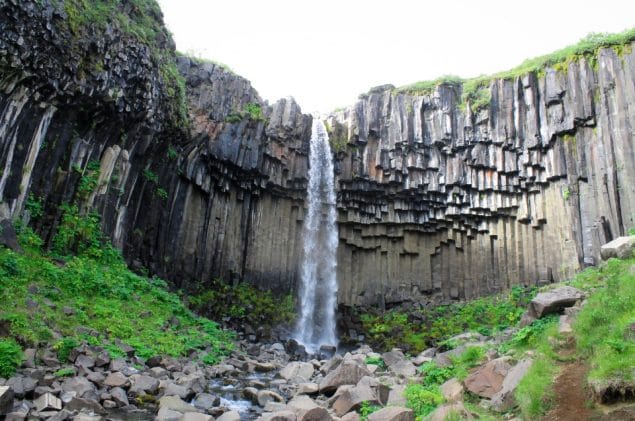
Situated in Skaftafell, which belongs to Vatnajökull National park, Svartifoss is one of the unique waterfalls in South East Iceland. An 1 hour hike is required to see Svartifoss.
Svartifoss means Black Waterfall due to the dramatic contrast between the white water tumbling over the black hexagonal columnar basalts. The sharp rocks broken from the basalts at the base of the fall make for a majestic view. This striking waterfall is narrow; the elegant cascade drops 20 meters from a crescent-shaped cliff. The horseshoe of basalt columns creates a majestic frame. People have compared Svartifoss to the pipes of a giant church organ. This dramatic feature inspired the columnar architecture of Hallgrímskirkja, the towering white church in Reykjavík.
How to get to Svartifoss?
Svartifoss is located south coast of Iceland. It’s a 4-hour drive from Reykjavik to Svartifoss.
Glymur

Glymur Waterfall, which is 198 meters tall, was listed as Iceland’s tallest waterfall until the position was grabbed by Mosárfoss at Vatnajökull glacier in 2011. Glymur is located amidst the most beautiful lush Botnsdalur Valley and majestically stands with a height of 650 feet (198 m). It is just amazing to spend an exhilarating day of hiking at the Glymur Waterfall amidst the lush green valley accompanying you throughout the trail. Glymur is indeed one of the hidden gems of Iceland. The complete hike takes around 4 hours of walking through the rocky surface, climbing, crossing the rivers, and wading through the caves that surely give an adrenaline rush. The complete loop of hiking is nearly about 4.6 miles. It is a haven for the hiker, adventure seekers, and tourists.
How to Get to Glymur?
This grand waterfall is located nearly 40 miles away from the west of Reykjavik. Drive towards Mosfellsbaer when starting your journey from Reykjavik followed by taking road number 1 that leads you to Akranes/Borgarnes. Take right and continue on the road 47 before the Hvalfjordur underwater tunnel. You will witness beautiful landscapes near Hvalfjordur with several waterfalls – this is the additional 60 kilometers if you choose not to go through the tunnel. Just when you reach the innermost point of the bay you can see the signs directing you to the east towards Glymur, where wide gravel road awaits you.
Read more in this detailed article about Glymur waterfall.
Godafoss
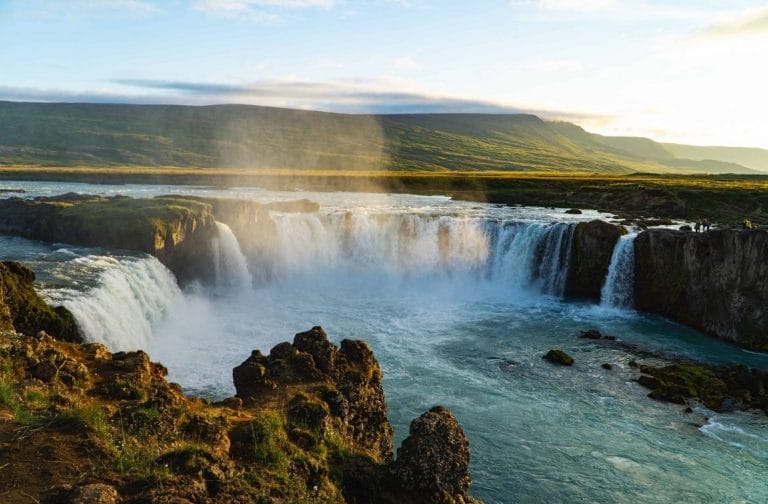
One of the most beautiful waterfalls of Iceland is the Goðafoss Waterfall, also known as the Waterfall of the Gods; those who witness the sheer beauty of this waterfall will agree that the name is fitting. The Godafoss waterfall creates one of the most beautiful sights and has always been a center of attraction to all the tourists, mountaineers and hikers.
Dropping down to a height of 12 meters and covering over a width of 30 meters, Goðafoss waterfall is fed by the river Skjálfandafljót that falls straight to this waterfall. The massive horseshoe-shaped rock separates the waterfall into two and the symmetrical, and asymmetrically curved cliffs cover the waterfall gorgeously to set an amazing visually appealing sight.
How to Get to Godafoss?
Located in northeast Iceland, Goðafoss can be easily accessible by car and you can reach the waterfall via Route 1, the Ring Road, which is roughly 50 km east of Akureyri, 53 kilometers south of Húsavík and 438 km away from Reykjavík, and 214 km away from Egilsstaðir.
Gullfoss
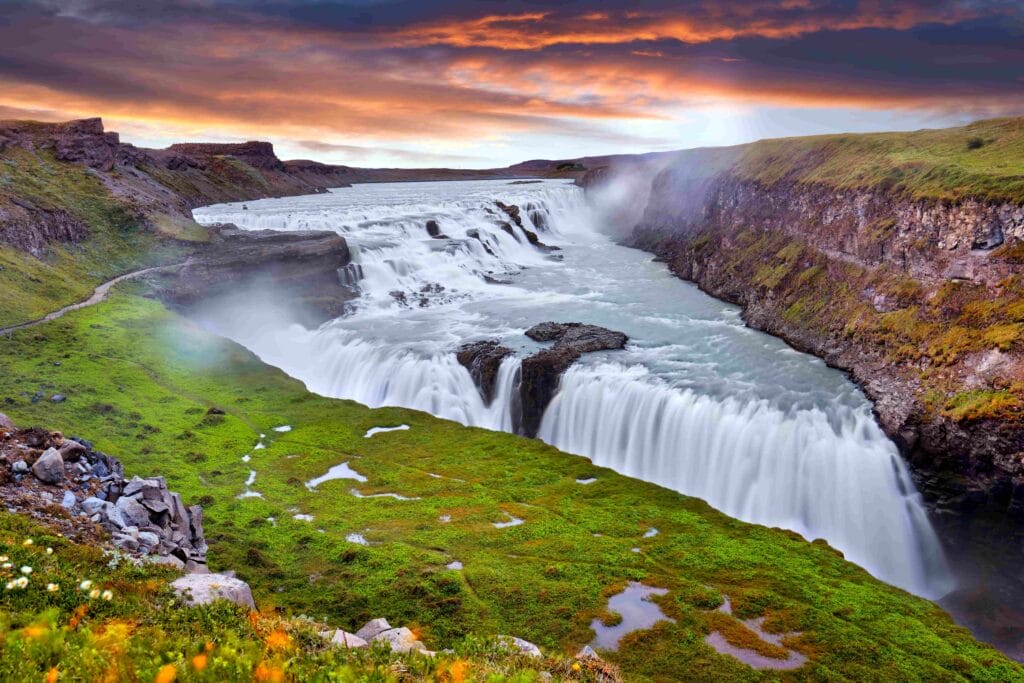
Widely considered the most famous of Icelandic waterfalls, translating directly to ‘Golden Waterfall’, Gullfoss is one of the top three landmarks in the Golden Circle, the most popular tourist trail in Iceland. Located in the mighty Hvítá river canyon, Southwest Iceland, Gullfoss Waterfall has crowed as one of Iceland’s most iconic falls.
This golden waterfall that drops down 32 meters (105 ft) is two-tiered. The mighty waterfall offers a deviating view over the seasons. While the summer sees a cascading veil of heavy water flow down from two levels, the winter freezes it into glistening waves of ice. In clear weather, it produces numerous rainbows by the clouds of sprays from the continuously tumbling water.
How to Get to Gullfoss?
The well-marked route will direct you to the waterfall while following the Ring Road. Around 113 km away from Reykjavik, take a turn for route 35 after driving east for about 54 km. Following the directions, you will find the parking to the waterfall, right next to a Visitor Center. You will see the waterfall right away, and it is a short walk to the sightseeing spot.
Skogafoss
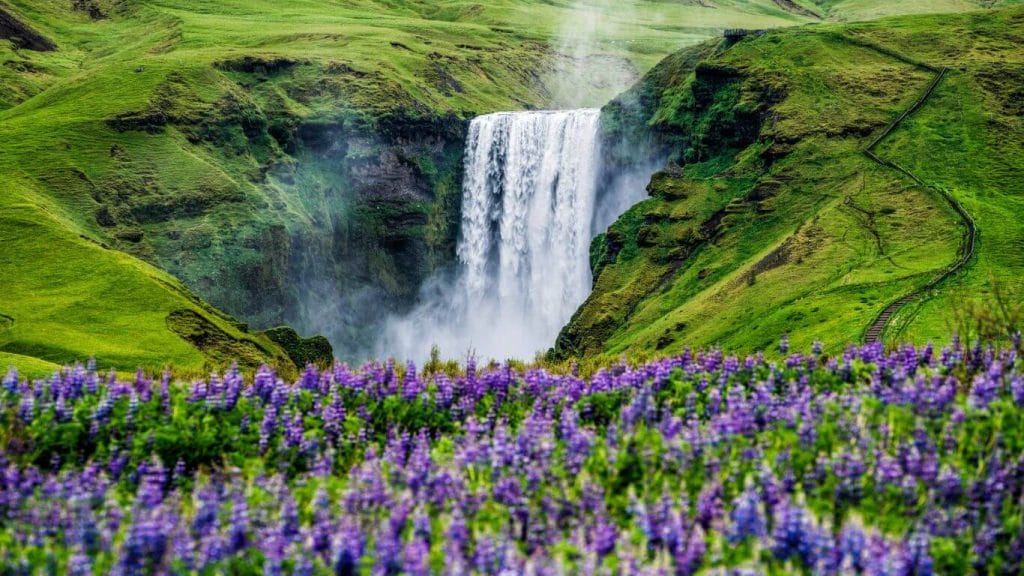
Translating to ‘forest waterfall’, the Skógafoss is one of Iceland’s most popular and astounding waterfalls. Located close to the area of Skógar, Skogafoss is 25 m (82 ft) wide and 60 m (197 ft) high. Along the Skógá river, this waterfall lies in the sea cliffs of the former Icelandic coastline, which has receded by 5 km. Despite this, the cliffs remain intact with a curtain of water magnificently flowing from a height of 60 meters. The unique waterfall is a direct offspring of two glaciers, Eyjafjallajokull and Myrdalsjokull.
One of the most attractive and dramatic waterfalls in Iceland, Skogafoss is a natural wonder that is effectively attracting tourists to immerse themselves in the striking view of cascading water. The charisma of Skogafoss is in its enthralling ability to create picturesque rainbows as the sun peeks in. The magical view of cascading waterfall producing single and double slit rainbows makes for the most photographed scene in Iceland.
How to Get to Skogafoss?
Easy to reach by road, Skogafoss is around 150 km from Reykjavik. Making it highly accessible from the main road, it falls only 2 km from the ring road and 500 meters off-road 1. Following the simple route signs navigating to ‘Skógá’ or ‘Skógafoss’, you will be led to the parking area near the foot of the grand Skogafoss.
Seljalandsfoss

Offering breathtaking sceneries and mesmerizing views, Seljalandsfoss is a widely popular waterfall when traveling the South Coast. Seljalandsfoss is narrow and tall; it is 65m/213ft. Located on Ring Road One, Seljalandsfoss waterfall is on the South Coast and visible from miles behind. With beautiful and serene surroundings, this spectacular natural phenomenon is the perfect spot for leisurely visits and picnics. The meadows around Seljalandsfoss are home to various wildflowers that bloom and thrive in the summer. Due to its rare quality which makes it spectacularly photographic that it can be fully encircled, and tourists can walk behind the torrents of the fall, Seljalandsfoss is one of the most visited picturesque waterfalls in Iceland.
How to Get to Seljalandsfoss waterfall?
The Seljalandsfoss waterfall is situated 75 miles east from Reykjavik and can be easily reached by following Route 1. Take a left from the farm of Seljaland along Iceland’s main highway and after a short distance, you will see the parking lot.
When it comes to water, Iceland has just got plenty of it in the form of glaciers, rivers, hot springs, lakes, waterfalls. Waterfalls of Iceland are indubitably mesmerizing. This list is just the tip of the iceberg, you will find countless waterfalls on your visit here. These impressive and picturesque waterfalls form the heart of the country.


